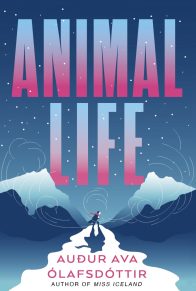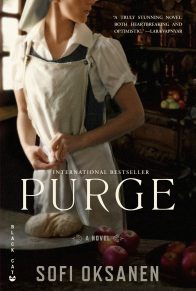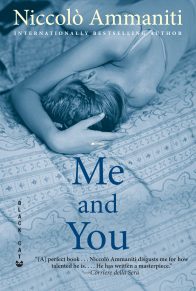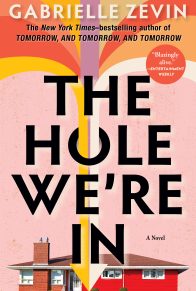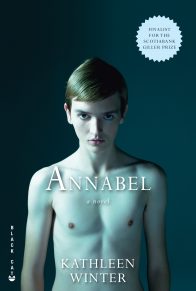1. “Nothing is as it should be” (p. 12). So says the nameless narrator of Butterflies in November as she sets off on her road trip around the coast of Iceland. She is referring to the unseasonal weather, but could be alluding to many aspects of her life. Begin your discussion of the novel by talking about some of the other possible interpretations of this statement. Consider the importance in the narrative of the relationship between the microcosm and the macrocosm, the inner journey of self-discovery versus the physical journey of a road trip.
2. “Reality is in a state of perpetual flux” (p. 13). Discuss the sense of change and uncertainty that pervades the novel, as people’s lives are altered in a moment and sent on a different trajectory. Find examples in the narrator’s life and talk about the ways they play out throughout the plot.
3. Set against the almost surreal Icelandic landscape of glaciers, deserts, and lava fields, consider the atmosphere’s effect on both the reader and the characters, especially the narrator. Is Iceland itself a character in the novel? How does it effect physical and emotional change on the characters’ lives?
4. The narrator’s lifestyle changes suddenly in the opening pages of the novel as she loses lover, husband, and home in quick succession. How does she handle her new situation? Examine the facets of her personality that are revealed by her husband and lover. Consider your reaction to those traits. What are some possible reasons that the author chose to leave the narrator nameless?
5. “A relationship to me is all about the right body and the right smell, the home is a shell for the body, not a place for exchanging existential views and having discussions” (p. 51). Consider whether or not it’s possible to maintain a relationship with such a perspective. Do the narrator’s past and future relationships hold true to this viewpoint? Discuss whether or not you think she adheres to this opinion at the end of the novel.
6. “Despite my mastery of many languages, I’ve never been particularly apt with words, at least not eye to eye, woman to man” (p. 64). Find examples of how miscommunication impacts her daily life.
7. The novel has a sense of madcap adventure that matches the quirkiness of the narrator’s character. Consider how humor either highlights or downplays serious moments, whether of sadness or reflection. Do you think it is possible to translate humor from one culture to another, from one language to another?
8. A road trip as plot device usually launches a character on the path to self-discovery. Is this narrator consciously in search of a new life, or is she more focused on running away from her old life? Both? Neither?
9. Discuss the symbolic meaning of butterflies throughout the novel. Is it a fitting metaphor?
10. Return to the conversation about language and miscommunication. Chart the ways in which Tumi and the narrator communicate with each other, and examine the evolution of their understanding one another.
11. The protagonist travels through rain and fog and floods, constantly at the mercy of the elements. How does weather affect both the reality and the surreal quality of her journey?
12. Tumi’s mother, Audur, staunchly supports the narrator as her marriage fails, and entrusts her with Tumi when incapacitated. Identify the various contributions Audur makes to the plot’s progression.
13. The narrator attracts male attention wherever she goes, even while traveling with a young child. What do men see in her? Discuss her need for freedom in contrast to the needs of the various men who disappear and reappear, unwilling to really let her go. What does the author convey about male and female needs and desires?
14. At the beginning of the novel, the narrator states, “I wasn’t made to be a mother, to bring up new humans. . . . The sight of a small child doesn’t trigger a wave of soft maternal feelings in me” (p. 33). Discuss the development of her relationship with Tumi and the ways that she begins to change with Tumi in her charge. Does the narrator live up to the comment, “Being a mother is about waking up and doing one’s best and then going to bed again and hoping for the best” (p. 102)?
15. Told in brief italicized flashbacks, the narrator’s childhood remains veiled and enigmatic. Examine her adulthood in light of what happened to her as a teenager at her grandmother’s house. In what ways did these brief insights into her past cause you to empathize with her? Did you want more or less insight into her past?
16. The narrator stands high above the ocean, about to bungee-jump into the void below. Discuss the darkly humorous epiphany she undergoes before leaping (p. 229), leading her to think, “I could barely be happier because I am beginning to know who I am, I am beginning to be someone else, beginning to be me.”
17. Chart the narrator’s developmental arc as she completes her journey, reaching the village where she spent the summers of her youth. Consider her relationships with men, including her ex-husband, and her relationship with Tumi. Has she come to terms with her past? What do you think the future holds for her?
18. The author includes forty-seven recipes and one knitting recipe in the final chapter. Discuss how this humorous addendum affected your overall impression upon concluding the book.
Suggestions for Further Reading:
The Hundred-Year-Old Man Who Climbed Out the Window and Disappeared by Jonas Jonasson; Doppler by Erlend Loe; The Unlikely Pilgrimage of Harold Fry by Rachel Joyce; The Borrower by Rebecca Makkai; Voyeur by Alain Robbe-Grillet





